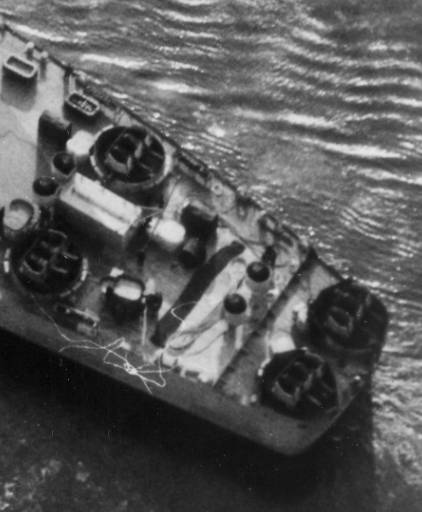BAV Maracaibo (BB-1940)
Back to Special Projects page
The White Russians fought the Bolsheviks and were backed by France and the
British in trying to restore the Monarchy/Parliament system in Russia. The White
Russians in the south were pushed back into the Crimean peninsula.
The White Russians trapped in the Crimea knew what awaited them when the
Soviets arrived. Death followed the Soviets like a black cloud. So they had a
great incentive to decamp and emigrate to another country. The White Russians
also required as much finance as they could raise to evacuate the citizenry,
then clothe and feed them till they could relocate to a final destination. They
stripped the Crimea of everything that could be loaded onto the convoy of ships
at Sevastopol.
What was available to the White Fleet in 1918-1920 were 2 battleships of the
Imperatritsa Mariya class, one near completed battleship, 3-4 pre-dreadnoughts,
Armoured cruisers, light cruisers, destroyers, submarines, gunboats and
merchantmen from liners to coasters. Merchantmen with the fleet had loaded on
them all things naval that could be gathered from the various Black Sea naval
bases and from the Black Sea Fleet ships under construction. This included bits
from the incomplete battlecruiser Navarin. The Fleet sailed with the Soviet
cavalry riding through the streets of Sevastopol. Just too late. Wrangels Fleet
was on the move.
The first move of the Fleet was to Turkish waters where the last minute rush
was then able to be sorted into more comfortable arrangements. Feelers were then
sent out by the White Russians to their countries of choice with requests for
asylum for the 50 odd ships and over 100,000 men, women and children aboard
them. Rejection after rejection arrived by telegraph and the list dwindled down
to those countries which were of a marginal choice. In December 1920 an emissary
from the Venezuelans arrived requesting an audience with the White Russian
leadership. The Venezuelans spent the next week interviewing and inspecting the
ships, their crews and the general population as to their skills.
The Venezuelans arranged with the White Russian leaders that Venezuela would
offer everyone on the fleet that wished to come to Venezuela asylum and
citizenship on their arrival in Venezuela. The Venezuelans would also purchase
any ships from the "White Russian Government" that arrived in Venezuelan waters,
the monies from these purchases would be disbursed amongst all of the immigrants
at a rate to be worked out with the White Russian Government. Everyone that
arrived in Venezuela would have a stake to start off their new life with. 98% of
the people decided to accept this offer.
In one stroke the Venezuelans went from a 3rd-4th division country to equal with
the Brazils and Chiles of South America. What set Venezuela apart was all the
artisans from the ports were available to Venezuela to start up its own ship
building industries. Engineering, Armourers, all the people needed to produce
guns and turrets were there. But.... all the infrastructure would need to be
built before major units could be built. Minor units and merchantmen were built
to keep the artisans using their skills while drydocks and berths were built.
Venezuela had its own oil, so a lot of the merchantmen built were oilers that
could operate for the Government distributing oil to the USA and European
nations. The revenue can be used to enlarge Venezuela by absorbing some of the
closer nations.
1935 and the Venezuelan Navy finally feels it has enough skilled people and
infrastructure to build its first capital ship. Among the bits and pieces
brought from the Black sea are three turrets and guns of 14" size that were to
be fitted to a battlecruiser. These armaments would be used as the basis for a
new battleship.

Completed in May 1940, the ship was sent north to the USA for fitting of the
gunnery directors and basic radar fittings of the time. The 40mm came from
licensing the Bofors weapon system and copying the first British and American
mountings. The 20mm were the basic Oerlikon cannons. The single 5" were a
domestic product. The original plan was to use eight twin turrets of the same
gun system but it was found that the single mounting fired much faster than the
twin. Less interference between guns.
Venezuela joined WW2 when it was called on through treaty obligations to the
United States. The Venezuelan Naval vessels were split over the various
theatres. The Maracaibo spent most of its time with Force H interdicting the
Central Atlantic area. If anything German broke through the outer cordons it was
Force H that was tasked with cleanup duties. Its major duty was to keep the
Italians and Spanish blockaded in the Mediterranean. If the Axis ships tried to
base their capital ships in Spanish ports, Force H would attack the ports with
aircraft from its four aircraft carriers to try to cripple the Axis ships in
port. These tactics forced the Axis fleet units back inside the Mediterranean,
out of harms way. Seapower at its finest.
| Displacement |
36,000 tons std 41,800 tons full load |
| Length |
750 ft |
| Breadth |
98 ft |
| Draught |
30 ft |
| Machinery |
4 shaft steam turbines, 125,000shp
|
| Speed |
30 knots |
| Range |
7000 miles at 15 knots (2,250 nm at 27 knots) |
| Armour |
12" side, 6" deck, 11/8/6" turrets |
| Armament |
9 x 14" (3x3) 12 x 5.1" (12x1)
44 x 40mm (11x4) 14 x 20mm (14x1) |
| Aircraft |
2 |
| Torpedoes |
nil |
| Complement |
1700 |
| Notes |
BAV Maracaibo |

Back to Special Projects page

